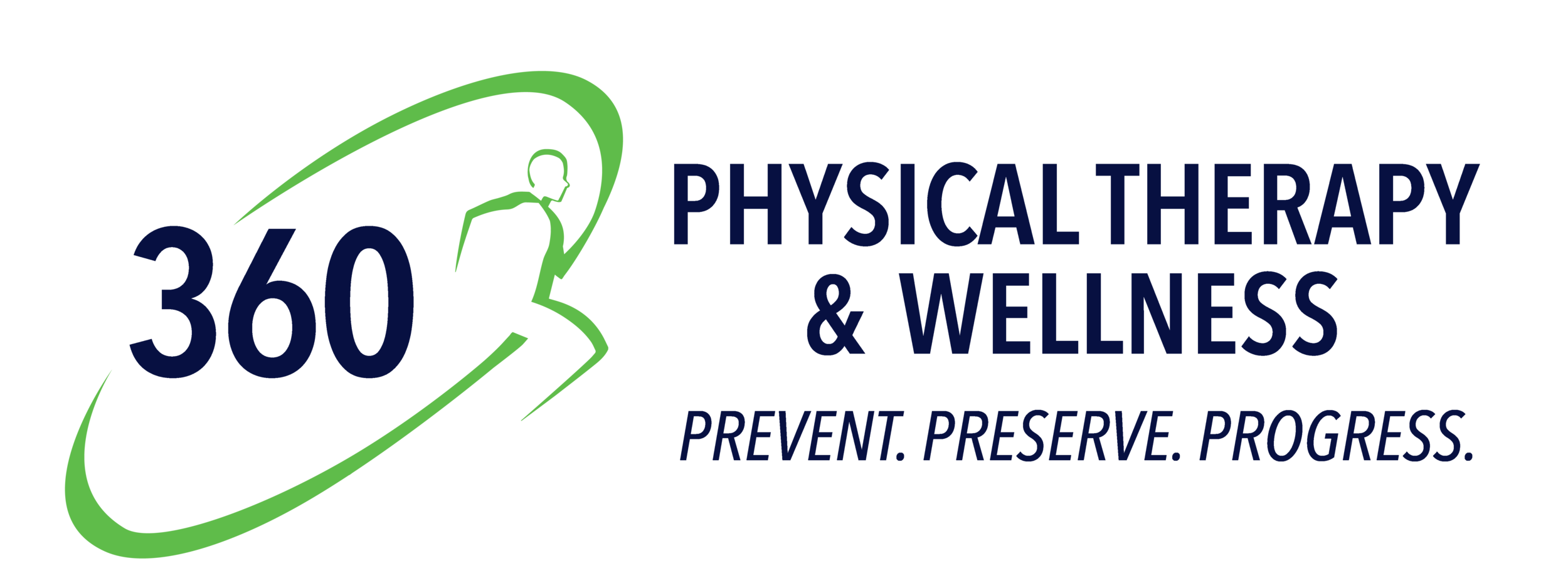
HIP PAIN
Are you experiencing pain or problems in your hips? Hip pain affects a variety of individuals, and for many reasons. Pain in and around the hips, including the groin, lower back, buttocks, and legs can affect your everyday movement and can negatively impact your job, home, and social life.
Physical therapy for hip pain is common and effective in avoiding continued pain and suffering and reduces the need for invasive surgeries. The physical therapists at 360 Physical Therapy & Wellness are here to help!
We will analyze your movement patterns to determine the origin of your pain and will work with you using a combination of conservative therapy treatments to reduce your pain and strengthen your muscles. Discuss your hip pain with one of our physical therapists. Schedule your consultation today!
WHAT IS HIP PAIN?
The hip joint is the body’s largest ball-and-socket joint. Cartilage surrounds the joint to keep the bone in the socket and prevent friction. If the cartilage is worn, or there is inflammation resulting from an injury, you will feel pain and stiffness in the hips.
Major nerves and blood vessels run through the hips, including the sciatic nerve. If you have weak, underused, or have over-stimulated the muscles surrounding the hip, you may feel the same pain and stiffness in the hips, in the lumbar spine, and down the legs.
Experiencing hip pain can come in many forms. Physical therapy for hip pain can improve mobility, reduce stiffness, and increase the strength of the surrounding muscles.
CAUSES OF HIP PAIN
There are many possible causes of hip pain. Less severe causes of hip pain include muscle strains, minor injuries, and underused or weakened muscles. More serious causes such as arthritis and inflammatory disorders can be a burden.
Symptoms of hip pain include tightness or loss of motion in the hips, snapping during movement, pain in the lower back, groin, buttocks, or hamstring muscles, limping, and difficulty laying on the hip.
Hip pain as a result of one of the following can be treated with physical therapy intervention:
Gluteal tendinopathy. This condition is a primary local source of lateral hip pain that commonly occurs in aging adults who are sedentary or in athletes who have over-worked their muscles. Gluteal tendinopathy can interfere with everyday movements and can affect sleep. Symptoms are equivalent to osteoarthritis of the hip.
Hip bursitis (Trochanteric bursitis). The most common cause if hip pain, bursitis is a swelling of the hip joint and muscles as a result of an injury, underused or overactive muscles, incorrect posture, or an underlying condition such as arthritis, gout, or thyroid disease.
Hip impingement. A condition that occurs when something prevents the ball-and-socket joint from moving seamlessly, hip impingement is a structural disorder of the hip. It can occur in people of all ages and is caused by deformities in the femoral head.
IT Band syndrome. IT band syndrome is a pain felt on the outside of your leg along the Iliotibial (IT) band. Pain can be felt from the hip to the knee and can be a sharp, shooting pain, or a constant irritation. IT band syndrome is typically seen in runners or other athletes.
Snapping hip. When muscle tendons become inflamed, often from overuse, they can click as they rub over the hip socket. It is a condition that is more common in women, athletes, and dancers. Treatment is conservative and physical therapy for snapping hip syndrome is proven successful.
Strained muscle. You may experience hip pain when a muscle that supports the hip joint is stretched. The hamstrings, hip flexors, and the gluteal muscles can become strained due to over-exertion, not stretching before exercise, or they may have suffered an injury or trauma.
Arthritis. Osteoarthritis is the most common form of arthritis (inflammation) in the hip. It is caused by normal wear-and-tear. Symptoms of hip arthritis include a dull, aching pain in and around the hip, increased stiffness, and difficulty walking. Physical therapy for osteoarthritis of the hip can increase range of motion, decrease pain, and strengthen the muscles surrounding the joint.
PHYSICAL THERAPY AFTER HIP REPLACEMENT SURGERY
Have you had hip replacement surgery? Physical therapy can speed recovery!
The physicians at 360 Physical Therapy & Wellness will identify a personalized and targeted strength program to help build the muscles that support your hip joint, with a goal of reducing down time, increasing mobility, and improving your quality of life.
PHYSICAL THERAPY FOR HIP PAIN
At 360 Physical Therapy & Wellness we use an individually tailored approach to reduce pain and improve your quality of life. Physical therapy for hip pain includes the following:
Manual therapy. Muscles, joints, or tissues that are inflamed or tense benefit from manual therapy. Your physical therapist will perform skilled, hands-on techniques to improve tissue extensibility; increase range of motion; reduce tension; reduce pain; and reduce soft tissue swelling and inflammation.
Joint mobilization/manipulation. Specialized, hands-on manual therapy techniques aimed at decreasing pain, reducing compensations, and improving mobility.
Massage therapy. Massage can help to increase hip mobility and relieve pain and stress on the hip joint.
Instrument Assisted Soft Tissue Mobilization (IASTM). A modern version of manual therapy, IASTM breaks down fascial restrictions and scar tissue with a small, ergonomically shaped tool. Studies have shown that IASTM improves range of motion, strength and pain perception following the treatment.
Functional exercise. We will perform a functional movement assessment to identify the muscles surround the hip joint that may be weak or underused. We will design individual exercise plans to increase the strength, endurance, and function of these muscles and we will provide you with the tools to continue a safe and effective exercise program at home.
Electrical stimulation. Electrical impulses are delivered through electrodes to stimulate the muscles surrounding the hip (hip flexor, gluteal muscles, hamstrings, IT band) and improve mobility.
Are you experiencing hip pain? Physical therapy for hip pain can help! Contact 360 Physical Therapy & Wellness of Fulton, MD today and become pain-free again!
